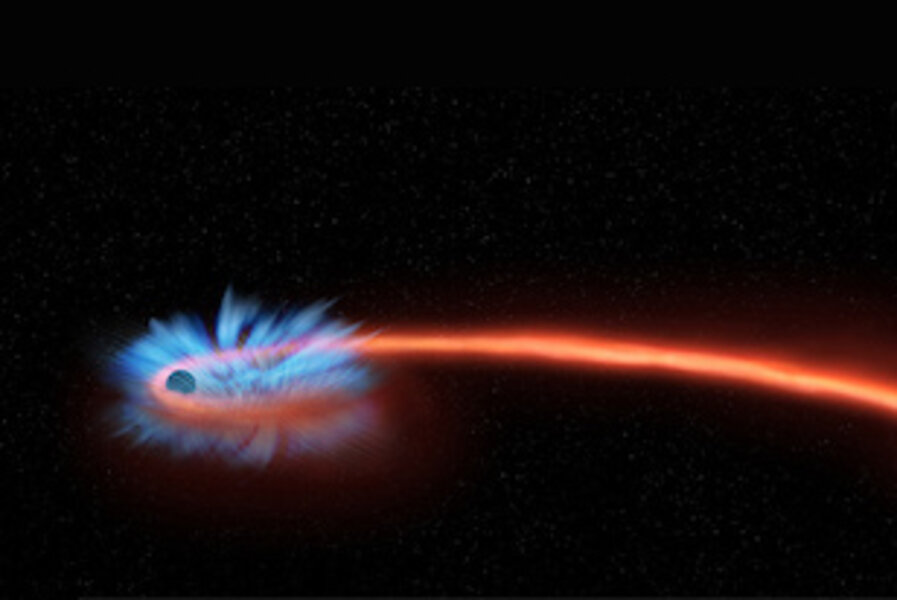Are black holes the ultimate star destroyers?
Loading...
Humans love looking to the stars, and are increasingly turning our gaze upward for energy (solar) and scientific research.
But these seemingly invulnerable stars are not at the top of the galactic food chain, and new observations have clarified just how they can die.
A team of astronomers witnessed the death, possibly murder, of a star by a black hole with an X-Ray telescope. They published a paper on Wednesday in the journal Nature describing the star's death by "tidal disruption."
As the press release explains, "When a star comes too close to a black hole, the intense gravity of the black hole results in tidal forces that can rip the star apart."
"We have seen evidence for a handful of tidal disruptions over the years and have developed a lot of ideas of what goes on," said lead author Jon Miller. "This one is the best chance we have had so far to really understand what happens when a black hole shreds a star."
Tidal disruptions cause an X-ray flare that can last for years. The closest observable tidal disruption occurred in a galaxy 290 million light-years away. Named ASASSN-14li, it was originally discovered in November 2014, but more recent use of NASA and European Space Agency equipment have provided the scientists with a clearer picture.
During tidal disruption, gas disks can form around the black hole. Until now, scientists have not known how they formed, but ASASSN-14li has provided new insights.
"The black hole tears the star apart and starts swallowing material really quickly, but that’s not the end of the story," said study co-author Jelle Kaastra. "The black hole can’t keep up that pace, so it expels some of the material outwards."
The close observations of ASASSN-14li also show the importance of using different methods to study astronomical and galactic events, noted co-author Suvi Gezari.
"Even though the event was discovered with an optical survey telescope, prompt X-ray observations were key in determining the characteristic temperature and radius of the emission and catching the signatures of an outflow," she explained.








